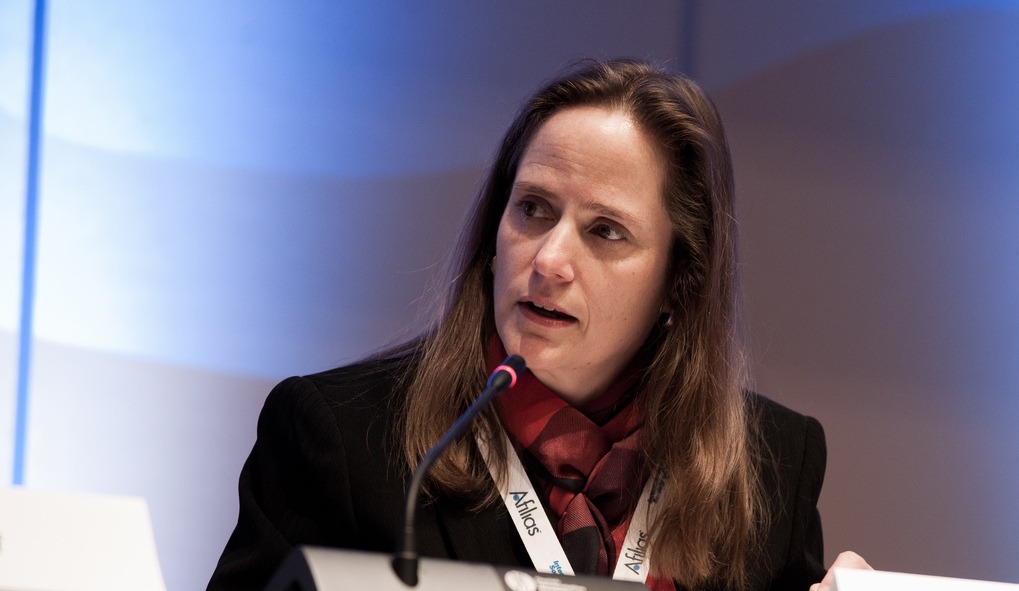I recently announced my departure from the Internet Society, and now that I’m winding down my last week here it seems like an excellent time to look back on where we started nearly seven years ago, where we are today, and where the Internet and ISOC can and should go from here.
In early October 2007, very shortly after I joined the Internet Society as its first Chief Internet Technology Officer, we had a senior management retreat to plan the coming year(s). I’m sure I had plenty to say about the state of the Internet’s technology and what to do about it, but the truth is that the thing I remember most about the meeting was that a frog leapt out of the CEO’s lunch salad.
Well, okay, I also recall that we fingered deployment of IPv6 and DNSSEC (I’ve dubbed them “broccoli technologies” in several talks over the years) and the need to support better routing infrastructure security as key areas of need in Internet infrastructure evolution. And, since I am a digital packrat, I can confirm that our thoughts on how to tackle those issues were pretty conventional for the time.
Fortunately, we didn’t follow those plans, and spent the next 6 1/2 years establishing the core technology programmes of the Internet Society as something more than the “institutional home of the IETF,” broadening our reach, and inventing new approaches to amplifying our impact.
Let’s see — we’ve:
- Hosted World IPv6 Day in 2011 and World IPv6 Launch in 2012, helping cement IPv6’s path to deployment
- Started hosting projects of the DNSSEC Deployment Initiative
- Began working with network operators to develop a “Routing Resilience Manifesto” and sharing information to promote a culture of collaboration and collective responsibility
- Launched the “Applied Networking Research Prize” with the Internet Research Task Force, to identify and reward talented people who can straddle the realms of research and engineering for the Internet
Good progress, I’d say!
My biggest takeaway from all of this: Internet technology is nice, but it’s the collaboration of real people that make it work.
I built a small team of really bright people, who in turn have creatively engaged experts in industry and academia to make progress on the outcome we all want: a better Internet.
It takes time to see projects come to fruition. The idea for World IPv6 Day started at a small ISOC-hosted meeting in December 2008, where we brought together a handful of technical experts from a few network operators to talk about the state of IPv6 readiness in their networks. We provided the neutral territory, and they shared their experiences. We heard everything from “research project” to “product is ready but not approved for release” and everything in between. Which is to say: everything except any real plans to turn on IPv6 in production service to customers, because the business decision makers could not yet see a business case they could support. Our invitees took away an improved understanding of how their experiences aligned with others’ realities.
Six months later, we invited web content providers to share their experiences, too. Through those and subsequent discussions, it became apparent that the imperative step was to get (major) web content available over IPv6, and those major web content providers had some significant uncertainties about impacts to customers if they turned on IPv6 (even without turning off IPv4). World IPv6 Day finally happened in June 2011, and was an industry collaborative experiment meant to determine the answer to the question. Thankfully, the answer was positive for IPv6 deployment!
Along the way, we developed a pretty good pitch for deploying IPv6. But, even as we got people interested, we uncovered another need: more direct deployment guidance for those not quite ready to be at the leading edge of technology deployment. Sure, there are a lot of valuable resources that exist, not the least of which is the Internet Engineering Task Force’s own collection of published RFCs. But, would-be deployers didn’t want to track down a lot of disparate resources — understanding they need to move quickly, they want a go-to resource for finding out what they need to do.
To respond to that need, we established another small team and launched the Deploy360 Programme — a curated portal of useful resources necessary for deploying technologies that are key to the Internet’s evolution, along with an active blog and social media presence to foster an interactive community where early adopters and fast-followers can share experiences and troubleshoot issues. It was, in fact, this team’s work that made ISOC the natural home for several projects of the DNSSEC Deployment Initiative, such as publishing weekly maps showing the global status of DNSSEC deployment.
In parallel, Lucy Lynch set up and lead the team to deliver on ISOC’s “Trust and Identity Initiative” — combining policy and technology activities to lay out and implement a roadmap for the development of a more trustworthy Internet and better privacy and identity tools for the people that use it. These are no small matters when it comes to the work of “strengthening the Internet” against pervasive monitoring.
Clearly, a lot has changed for the Internet since September 2007. At that time, the iPhone 1 was still young; the first publicly available Android phone was a year out. Between them, iOS, Android and the devices they power have made the Internet pervasive in ways we could not have imagined. (I don’t know about you, but I used to be able to walk freely around my house. Now, I seem to be trailing a set of small devices (and, alas, reading glasses) from room to room!).
Even as the use of the Internet becomes more pervasive, the base issues of ensuring an accessible, open-standards-based platform for innovation are ongoing. It’s not yet fully clear what the right answers will be in the face of such things as pervasive monitoring of Internet traffic, or selective service blocking. To address them, my advice to ISOC’s next CITO, whomever that may be, is to work with good people and foster broad collaboration to address the issues, since we all know that the Internet’s Technology Matters.
I will now join you all in watching this space for further adventures of the ISOC technology team. If you want to know what I’m up to, I’ll be reporting out from my personal blog space: http://web.thinkingcat.com/wordpress/blog/.

